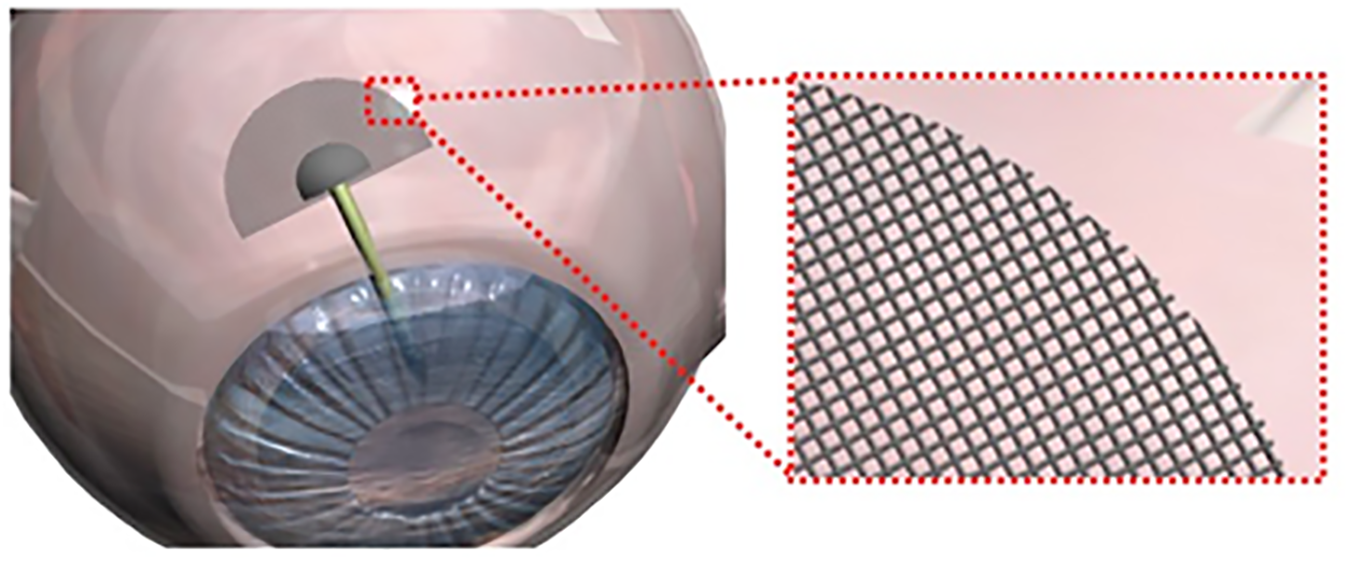Background
Glaucoma is the leading cause of irreversible blindness in the world and affects almost three million people in the United States alone. The primary treatment option is to reduce the intraocular pressure (IOP) caused by fluid buildup in the affected eye, which is frequently accomplished by surgery to create an outflow of the accumulated fluid. Conventional surgical treatments, including glaucoma drainage implants (GDI) and minimally invasive glaucoma surgeries (MIGS), rely on creating and maintaining an additional opening in the eye to allow excess fluid to drain.
However, up to fifty percent of surgical implants will fail within five years due to foreign body reactions against the implant. The most likely causes of failure are fibrosis and capsule formation caused by irritation and inflammation due to the size and rigidity of the implant. Thus, there is a critical need for implants designed to minimize foreign body reaction and fibrosis while maintaining fluid outflow.
Technology description
Scientists at UT Austin and the University of California, San Francisco have developed a flexible porous microfluidic mesh implant that, when coupled to a drainage tube, functions as a glaucoma drainage implant (Fig. 1). In contrast to conventional implants, the microfluidic mesh is flexible and mechanically similar to tissue, reducing the likelihood of inflammation, foreign body response, and fibrosis. Additionally, the implant is designed to be small, reducing surgical footprint, further reducing the likelihood of foreign body reactions.

The conventional plate of the GDI has been redesigned as a microfluidic meshwork.

